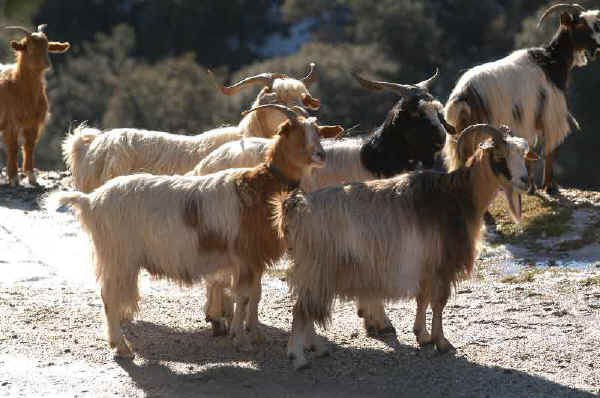Type the name of the breed you're looking for below
[wpdreams_ajaxsearchlite] Don't see the breed your're looking for? Click here and let us know!
Sarda goat
| Place of Origin | Sardinia |
| Origin | The Sarda is an indigenous breed of domestic goat from the Mediterranean island of Sardinia, off the west coast of central Italy. It is raised throughout the island, particularly in the provinces of Cagliari and Nuoro. It is an ancient breed that has been influenced by the Maltese goat. |
| Purpose | Milk |
| Characteristics | The animals are of medium build, long-necked and deep-chested; the does have well-developed udders. The breed is particularly hardy and well-suited to being raised in a wild or semi-wild state in tough conditions. As much of the available pasture is used by the Sarda sheep, goats are marginalised and allowed only the poorest terrain; they are fed little or nothing over and above what they can graze. Traits Weight - Male: 67 kg (148 lb) - Female: 50 kg (110 lb) Height - Male: 77 cm (30 in) - Female: 70 cm (28 in) Wool colour: very variable Horn status: may be horned Beard: may be bearded Tassels: may be present |
| Other Considerations | The milk yield of the Sarda per lactation of 220–240 days is 173 ± 62 litres for primiparous, 215 ± 98 l for secondiparous, and 237 ± 109 l for pluriparous, nannies. The milk averages 3.94% protein, and is used to make Gioddu, a fermented milk product; Casu Axeddu, a mixed pecorino–caprino cheese; and ricotta. Kids are slaughtered at a weight of 7–10 kg. The Sarda is one of the eight autochthonous Italian goat breeds for which a genealogical herdbook is kept by the Associazione Nazionale della Pastorizia, the Italian national association of sheep and goat breeders. The herdbook was established in 1981. In 1998 the total population was 260,000, of which 6577 were registered in the herdbook; at the end of 2013 the registered population was 11,121. |



